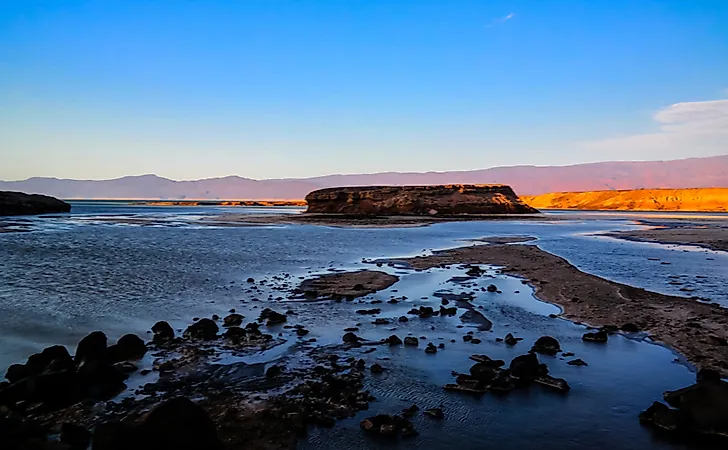8 Interesting Facts About Djibouti

Djibouti is a nation located in the Horn of Africa. The country is made up of 90% of desert land which belongs to the Danakil Desert. Consequently, the country’s climate is hot and dry. Djibouti is bordered by three countries namely Eritrea, Somalia, and Ethiopia. Moucha Island is the largest island in Djibouti. Some of the interesting facts about Djibouti are as follows;
8 Interesting Facts About Djibouti
1. Lake Assal of Djibouti is the world's third most saline body of water
Lake Assal is a crater lake found within the Danakil Desert in Djibouti. A section of the lake contains very salty water fed by hot springs. Consequently, the lake is saltier than the Dead Sea. Besides, it is considered the saltiest lake in the world apart from the Don Juan Pond and Gaet'ale Pond of Antarctica. The salt in Lake Assal is extracted for human consumption.
2. Djibouti is home to the famous Gulf of Tadjoura
The Gulf of Tadjoura is an Indian Ocean basin located south of the straits of Bab-el-Mandeb. It measures 347 square kilometers in size. It is among the world’s richest areas in terms of coral growth and fish species. It is also a great tourist destination for enjoying activities such as snorkeling with whale sharks, photography, and scuba diving.
3. Djibouti’s national animal is the elk
The national animal of Djibouti is the elk which is scientifically known as Cervus canadensis. It is locally known as the “wapiti” meaning “the light-colored deer.” The Djibouti elks are the largest species within the deer family. They inhabit the woodlands and are a population of approximately 60,000 in the country.
4. Djibouti has one of the highest unemployment rates in the world
A high unemployment rate is an indicator that a country’s economy is not robust enough to generate jobs for those seeking to work. Djibouti is among countries that have had high unemployment rates for years. Between 1991 and 2010 the country’s unemployment rate was 52.33%. However, the rate reduced to 11.12% in 2018.
5. Djibouti’s population is made up of only two tribes: Afar and Issa
The Afar are also known as the Danakil or Odali. They are a Cushitic ethnic group that inhabits Ethiopia, Djibouti, and Eritrea. The Afar speak the Afar language and are organized into kingdoms led by Sultans. On the other hand, the Issa people are the majority of the population in Djibouti occupying cities such as Harar, Holhol, Djibouti City, and Adde among others. This tribe emanates from the Somali clan which is part of the Dir Clan.
6. Djibouti’s hydrothermal field located in the Danakil Depression is a wonder
The Danakil Depression is a 3,800 square mile bowl that goes as deep as 400 feet below the sea level. Dallol hydrothermal field is located amid the depression. It is popularly known for its high temperatures as well as a unique change of colors in its surroundings. Normally, this desert area is brown and gray. However, the colors can always change in a split second to orange, yellow, and green which are breathtaking. The hypothermal field is indeed a wonder to the human eyes.
7. Djibouti is the 3rd smallest country in Africa by land area
Djibouti is the 3rd smallest country after Swaziland and Gambia which have land areas of 6,704 and 4,127 square miles respectively. Its land area is 8,958 square miles. In comparison to the US states, Djibouti is almost the size of New Jersey which is 8,722 square miles in size.
8. The largest forest in Djibouti is Forêt du Day National Park
Forêt du Day National Park is a 900-hectares forest in Djibouti which is famous for its East African Junipers which grow as high as 950 meters. This forest is among the two closed Djibouti forests. Juniper trees are used for building houses, poles, and furniture. Their barks are used for beehives.











